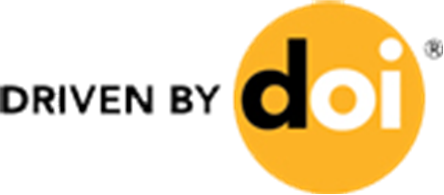Enhancing Productivity and Reducing Handling Cost through Standard Time and Motion Study: A Case Study of a Warehouse Service Business
Abstract
งานวิจัยนี้มีวัตถุประสงค์เพื่อเพิ่มผลิตภาพและลดต้นทุนของกระบวนการขนถ่ายสินค้าในคลังสินค้าที่ให้บริการจัดเก็บเครื่องดื่มแอลกอฮอล์ประเภทเบียร์และสุรา โดยใช้แนวคิดการศึกษาการทำงาน (Work Study) ด้วยเทคนิคการวิเคราะห์เวลามาตรฐาน (Standard Time Analysis) และการศึกษาการเคลื่อนไหว (Motion Study) ครอบคลุม 7 งานย่อย ได้แก่ การขนสินค้าลงจากรถขนส่ง (Unloading), การตรวจสอบสินค้าขาเข้า (Inbound Checking), การจัดเก็บสินค้า (Put-Away), การหยิบสินค้า (Picking), การตีตรา (Stamping), การตรวจสอบสินค้าขาออก (Outbound Checking) และการขนสินค้าขึ้นรถขนส่ง (Loading) พร้อมการประยุกต์ใช้หลักการ ECRS (Eliminate, Combine, Rearrange, Simplify) และแนวคิดความสูญเปล่า 7 ประเภท เพื่อลดความสูญเปล่าในกระบวนการ และเพิ่มผลิตภาพ ผลการศึกษาพบว่า งาน Put-Away และ Stamping เป็นกิจกรรมคอขวดที่ใช้เวลาสูงกว่างานอื่นอย่างเห็นได้ชัด หลังการปรับปรุงพบว่าสามารถลดจำนวนรถยกได้ 4 คัน ลดจำนวนพนักงานได้ทั้งหมด 17 คน ส่งผลให้ลดต้นทุนได้มากกว่า 4.97 ล้านบาทต่อปี โดยยังสามารถรองรับปริมาณงานได้เท่าเดิม แสดงให้เห็นว่าการกำหนดเวลามาตรฐานและการจัดสรรทรัพยากรอย่างมีประสิทธิภาพสามารถยกระดับการดำเนินงานของคลังสินค้าได้จริง งานวิจัยนี้จึงเหมาะสำหรับคลังสินค้าที่มีข้อจำกัดด้านงบประมาณ และต้องการแนวทางที่ประหยัด คุ้มค่า และนำไปประยุกต์ใช้ได้ทันที โดยไม่ต้องพึ่งพาระบบขนถ่ายสินค้าอัตโนมัติหรือเทคโนโลยีราคาแพง
This research aims to enhance productivity and reduce handling costs in a warehouse storing alcoholic beverages such as beer and spirits. The research applies Work Study concepts, including Standard Time Analysis and Motion Study, across seven subprocesses: unloading, inbound checking, put-away, picking, stamping, outbound checking, and loading. It also integrates ECRS principles (Eliminate, Combine, Rearrange, Simplify) and the concept of the seven types of waste to eliminate inefficiencies and improve labor productivity. The findings indicate that put-away and stamping were identified as bottleneck activities with noticeably higher time consumption than other tasks. After implementing improvements, the number of forklifts was reduced by four, and 17 personnel positions were eliminated, resulting in annual cost savings of over 4.97 million baht—without compromising the warehouse’s service capacity. These results demonstrate that effective standard time setting and resource allocation can significantly improve warehouse operations. The proposed approach is practical for warehouses facing budget constraints and seeking cost-effective, immediately applicable solutions without relying on high-cost automation systems or advanced technologies.
Keywords
[1] https://www.nesdc.go.th/download/logistics/r eport/LogisticsReportEN.pdf (Accessed on 7 January 2025). (in Thai)
[2]https://www.ttbbank.com/th/newsroom/detail/t tba-transportation-jan-2025 (Accessed on 11 February 2025). (in Thai)
[3] https://asean.org/wp-content/uploads/2023/02/CHAPTER-04-WAREHOUSING-ACTIVITIES.pdf (Accessed on 09 June 2024).
[4] V. Gopalan, P. Jayaraman and M. Sundarakani, Improving internal logistics process by time and motion study: A case study, Procedia Computer Science, 2023, 218, 3171-3176.
[5] F. Ahmad, M.K. Hasan, S.J. Lee and M. Hussain, Waste identification and reduction using lean tools in warehouse: A case of beverage company, Journal of Industrial Engineering and Management, 2023, 16(1), 89-102.
[6] D. Ivanov, A. Dolgui and B. Sokolov, A practical application of lean methods for warehouse performance improvement, International Journal of Production Research, 2023, 61(2), 495-509.
[7] B.W. Niebel and A. Freivalds, Methods, standards, and work design, 13th Ed., McGraw-Hill Education, NY, USA, 2014, 379-415.
[8] R.M. Barnes, Motion and time study: Design and measurement of work, 7th Ed., John Wiley and Sons, NY, USA, 1980, 257-287.
[9] L.J. Krajewski, M.K. Malhotra and L.P. Ritzman, Operations management: Processes and supply chains, 12th Ed., Pearson, NJ, USA, 2019, 385-410.
[10] B.W. Niebel and A. Freivalds, Methods, standards, and work design, 11th Ed., McGraw-Hill, NY, USA, 2003, 481-520.
[11] T. Ohno, Toyota production system: Beyond large-scale production, Trans. G.M. Bodek, Productivity Press, OR, USA, 1988, 33-40.
[12] J.K. Liker, The toyota way: 14 management principles from the world’s greatest manufacturer, McGraw-Hill, NY, USA, 2004, 45–70.
[13] R. Kanchanapanyakom, Industrial work study, Rev. Ed., Top Publishing Co., Ltd., Bangkok, Thailand, 2019, 229-330. (in Thai)
[14] K. Sirikasemsuk, Work study and productivity improvement, SE-ED, Bangkok, Thailand, 2022, 257-297. (in Thai)
[15] M.P. Groover, Work systems and the methods, measurement, and management of work, 2nd Ed., Pearson, NY, USA, 2015, 60-75.
DOI: 10.14416/j.ind.tech.2025.08.014
Refbacks
- There are currently no refbacks.






